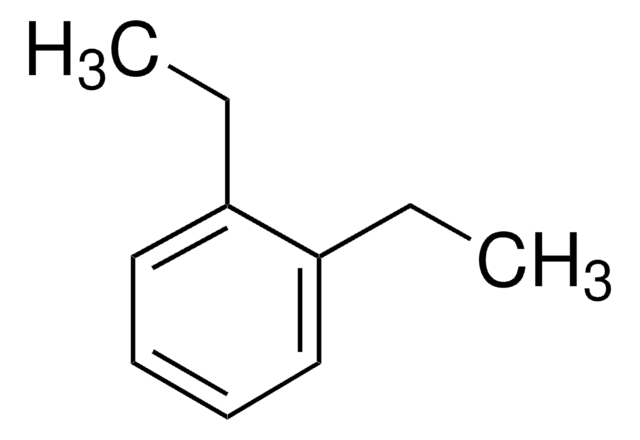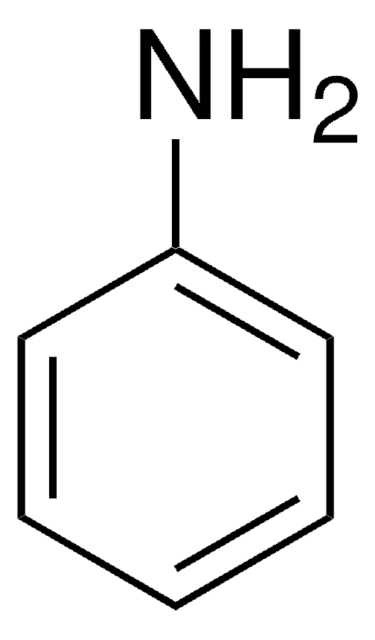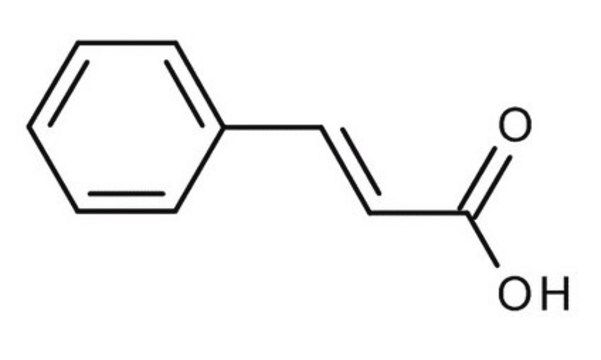Wichtige Dokumente
179191
Cyclohexan
ACS reagent, ≥99%
About This Item
Empfohlene Produkte
Qualität
ACS reagent
Qualitätsniveau
Dampfdichte
2.9 (vs air)
Dampfdruck
168.8 mmHg ( 37.7 °C)
77 mmHg ( 20 °C)
Assay
≥99%
Form
liquid
Selbstzündungstemp.
500 °F
Expl.-Gr.
9 %
Verunreinigungen
H2SO4, passes test (darkened)
≤0.02% water
Abdampfrückstand
≤0.002%
Farbe
APHA: ≤10
Brechungsindex
n20/D 1.426 (lit.)
bp
80.7 °C (lit.)
mp (Schmelzpunkt)
4-7 °C (lit.)
Dichte
0.779 g/mL at 25 °C (lit.)
SMILES String
C1CCCCC1
InChI
1S/C6H12/c1-2-4-6-5-3-1/h1-6H2
InChIKey
XDTMQSROBMDMFD-UHFFFAOYSA-N
Suchen Sie nach ähnlichen Produkten? Aufrufen Leitfaden zum Produktvergleich
Allgemeine Beschreibung
Anwendung
- As a solvent in the synthesis of europium dibenzoylmethide triethylammonium (EuD4TEA).
- Preparation of poly(dimethylsiloxane) (PDMS) microchip.
- As a solvent in the two-solvent (cyclohexane/water) deposition method for the preparation of monometallic 5wt% Ni containing catalysts.
Signalwort
Danger
H-Sätze
Gefahreneinstufungen
Aquatic Acute 1 - Aquatic Chronic 1 - Asp. Tox. 1 - Flam. Liq. 2 - Skin Irrit. 2 - STOT SE 3
Zielorgane
Central nervous system
Lagerklassenschlüssel
3 - Flammable liquids
WGK
WGK 2
Flammpunkt (°F)
-4.0 °F - closed cup
Flammpunkt (°C)
-20 °C - closed cup
Analysenzertifikate (COA)
Suchen Sie nach Analysenzertifikate (COA), indem Sie die Lot-/Chargennummer des Produkts eingeben. Lot- und Chargennummern sind auf dem Produktetikett hinter den Wörtern ‘Lot’ oder ‘Batch’ (Lot oder Charge) zu finden.
Besitzen Sie dieses Produkt bereits?
In der Dokumentenbibliothek finden Sie die Dokumentation zu den Produkten, die Sie kürzlich erworben haben.
Kunden haben sich ebenfalls angesehen
Unser Team von Wissenschaftlern verfügt über Erfahrung in allen Forschungsbereichen einschließlich Life Science, Materialwissenschaften, chemischer Synthese, Chromatographie, Analytik und vielen mehr..
Setzen Sie sich mit dem technischen Dienst in Verbindung.









